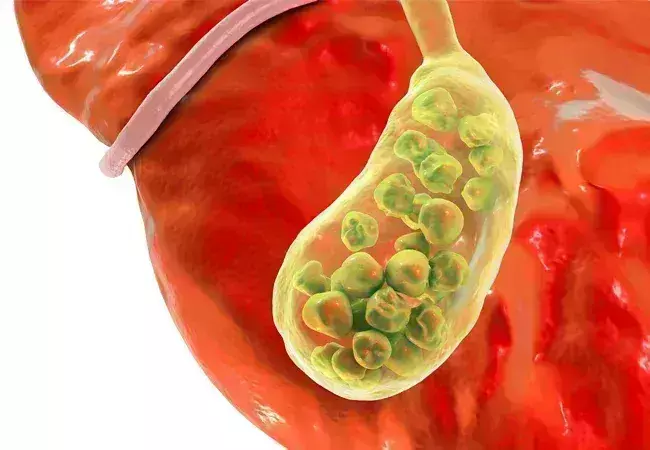- Home
- Medical news & Guidelines
- Anesthesiology
- Cardiology and CTVS
- Critical Care
- Dentistry
- Dermatology
- Diabetes and Endocrinology
- ENT
- Gastroenterology
- Medicine
- Nephrology
- Neurology
- Obstretics-Gynaecology
- Oncology
- Ophthalmology
- Orthopaedics
- Pediatrics-Neonatology
- Psychiatry
- Pulmonology
- Radiology
- Surgery
- Urology
- Laboratory Medicine
- Diet
- Nursing
- Paramedical
- Physiotherapy
- Health news
- Fact Check
- Bone Health Fact Check
- Brain Health Fact Check
- Cancer Related Fact Check
- Child Care Fact Check
- Dental and oral health fact check
- Diabetes and metabolic health fact check
- Diet and Nutrition Fact Check
- Eye and ENT Care Fact Check
- Fitness fact check
- Gut health fact check
- Heart health fact check
- Kidney health fact check
- Medical education fact check
- Men's health fact check
- Respiratory fact check
- Skin and hair care fact check
- Vaccine and Immunization fact check
- Women's health fact check
- AYUSH
- State News
- Andaman and Nicobar Islands
- Andhra Pradesh
- Arunachal Pradesh
- Assam
- Bihar
- Chandigarh
- Chattisgarh
- Dadra and Nagar Haveli
- Daman and Diu
- Delhi
- Goa
- Gujarat
- Haryana
- Himachal Pradesh
- Jammu & Kashmir
- Jharkhand
- Karnataka
- Kerala
- Ladakh
- Lakshadweep
- Madhya Pradesh
- Maharashtra
- Manipur
- Meghalaya
- Mizoram
- Nagaland
- Odisha
- Puducherry
- Punjab
- Rajasthan
- Sikkim
- Tamil Nadu
- Telangana
- Tripura
- Uttar Pradesh
- Uttrakhand
- West Bengal
- Medical Education
- Industry
FIB-4 Score Positively Linked to Gallstone Risk in US Adults, confirms study

Researchers have discovered in a new study that a greater fibrosis-4 index (FIB-4) score, a noninvasive marker traditionally used to assess liver fibrosis, is strongly associated with an increased risk of gallstones among adults. Gallstones are among the most prevalent gastrointestinal diseases, but their association with markers of fibrosis in the liver such as FIB-4 is poorly understood. The new analysis offers valuable information regarding how biomarkers of the liver may be associated with risk for gallbladder disease in the general population. The study was published in BMC Gastroenterology by Huqiang Dong and colleagues.
The research used 2017–2020 National Health and Nutrition Examination Survey (NHANES) data and involved 7,771 participants. It is one of the largest nationally representative analyses to examine this association in US adults. The investigators examined the association of FIB-4 levels with the presence of gallstones based on data from NHANES, a well-established US population-based survey. The FIB-4 index was derived from age, AST, ALT, and platelet count.
Participants were categorized into quartiles according to their FIB-4 levels, and multivariate logistic regression models were used to examine the association with risk of gallstones. Restricted cubic spline (RCS) analysis was employed to check for nonlinear trends, and threshold effects analysis was utilized to identify inflection points at which risk levels altered. Subgroup analyses were conducted to test consistency within various demographic and health subgroups, and Bonferroni correction was implemented to preserve statistical precision.
Results
The weighted prevalence of gallstones in the study population was 11%. There was a clear and statistically significant positive association between FIB-4 levels and risk of gallstones:
• For every unit increase in FIB-4, there was a 19% increase in the odds of gallstones (Odds Ratio [OR] = 1.19; 95% Confidence Interval [CI]: 1.10 to 1.29).-
• When quartiled, individuals in the uppermost FIB-4 quartile (Q4) had a 60% increased risk of gallstones (OR = 1.60; 95% CI: 1.25 to 2.03) than those in the lowest quartile (Q1).
• The RCS analysis found a nonlinear positive relationship between FIB-4 and risk for gallstones with a statistically significant nonlinear trend (p = 0.015). Risk increased sharply beyond an inflection point at a FIB-4 score of 2.43 (p = 0.001).
• Subgroup analysis validated that the positive correlation between FIB-4 and gallstones persisted strongly among non-Hispanic whites, subjects without heart failure or coronary artery disease, and among alcohol users and smokers. Following Bonferroni adjustment, these correlations persisted statistically significantly (p < 0.00217).
This research firmly determines a strong, nonlinear relationship between FIB-4 elevation and increased gallstone risk in US adults. These findings point to the potential of FIB-4 as an inexpensive, noninvasive gallstone risk marker that is rapid. As gallstones are typically asymptomatic until complications are formed, the value of FIB-4 as an adjunct tool to screening could improve earlier diagnosis and prevention efforts, particularly in high-risk patients.
Reference:
Dr Riya Dave has completed dentistry from Gujarat University in 2022. She is a dentist and accomplished medical and scientific writer known for her commitment to bridging the gap between clinical expertise and accessible healthcare information. She has been actively involved in writing blogs related to health and wellness.
Dr Kamal Kant Kohli-MBBS, DTCD- a chest specialist with more than 30 years of practice and a flair for writing clinical articles, Dr Kamal Kant Kohli joined Medical Dialogues as a Chief Editor of Medical News. Besides writing articles, as an editor, he proofreads and verifies all the medical content published on Medical Dialogues including those coming from journals, studies,medical conferences,guidelines etc. Email: drkohli@medicaldialogues.in. Contact no. 011-43720751


